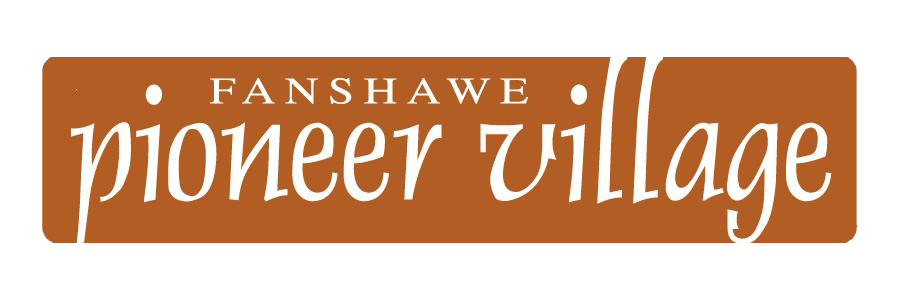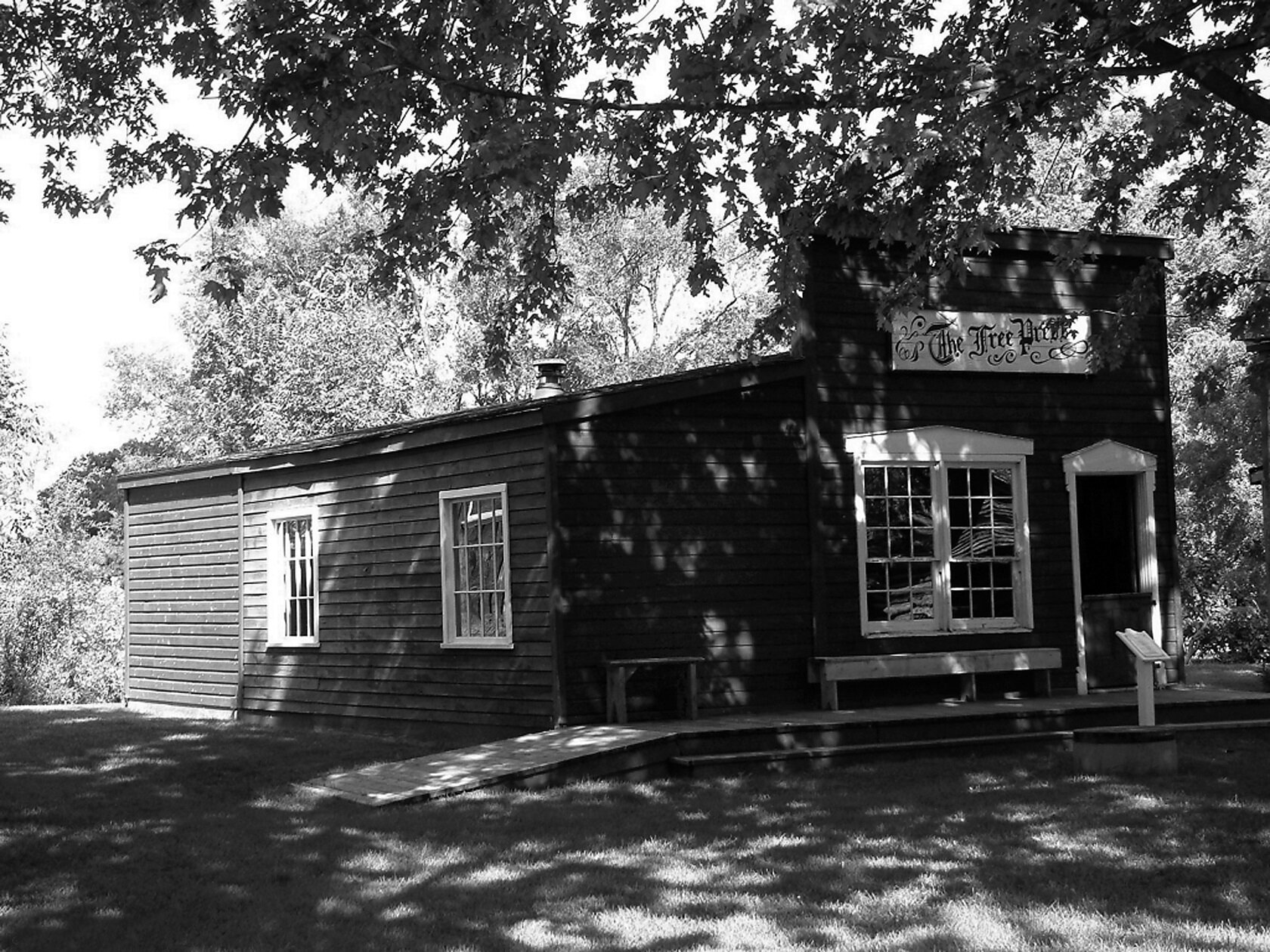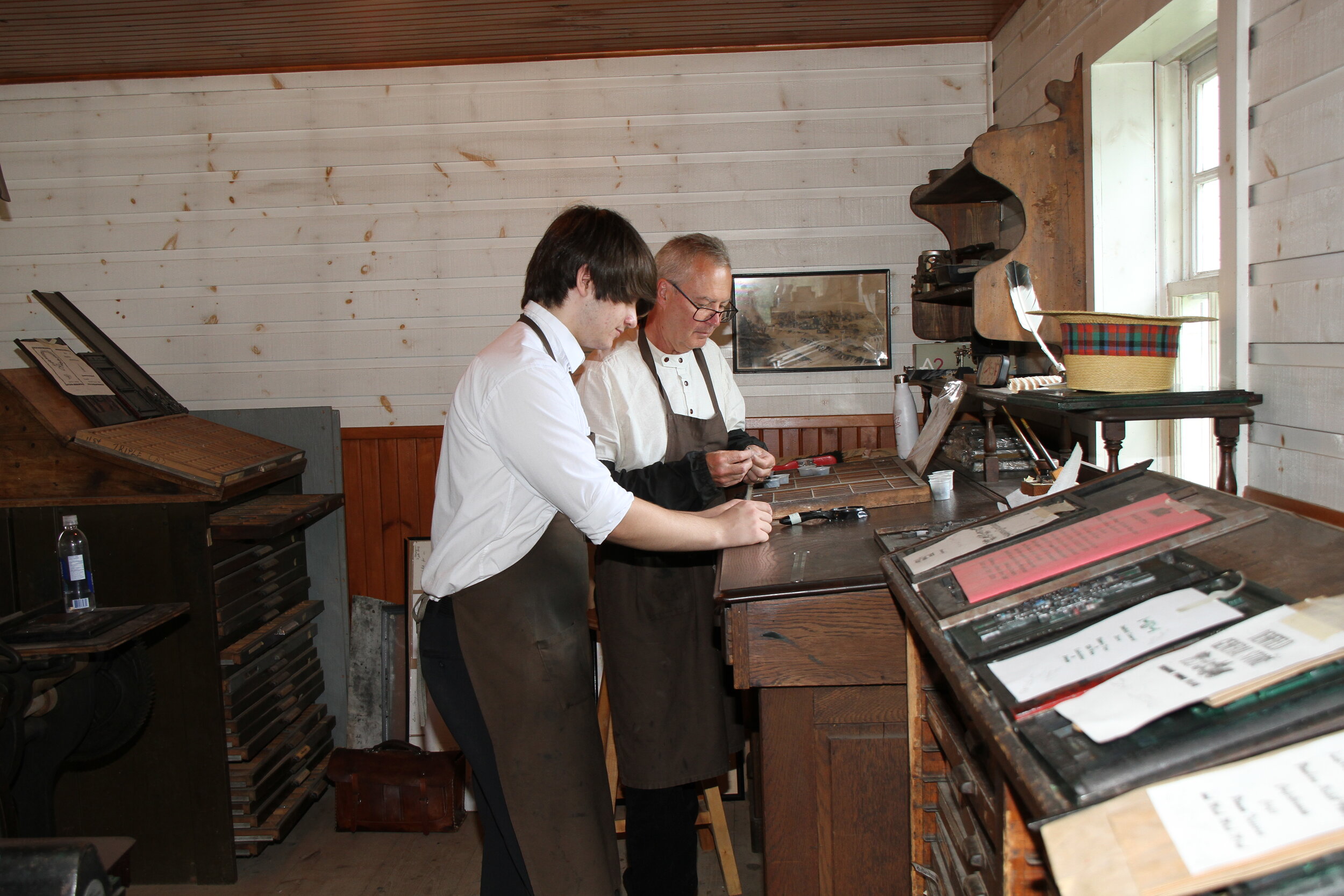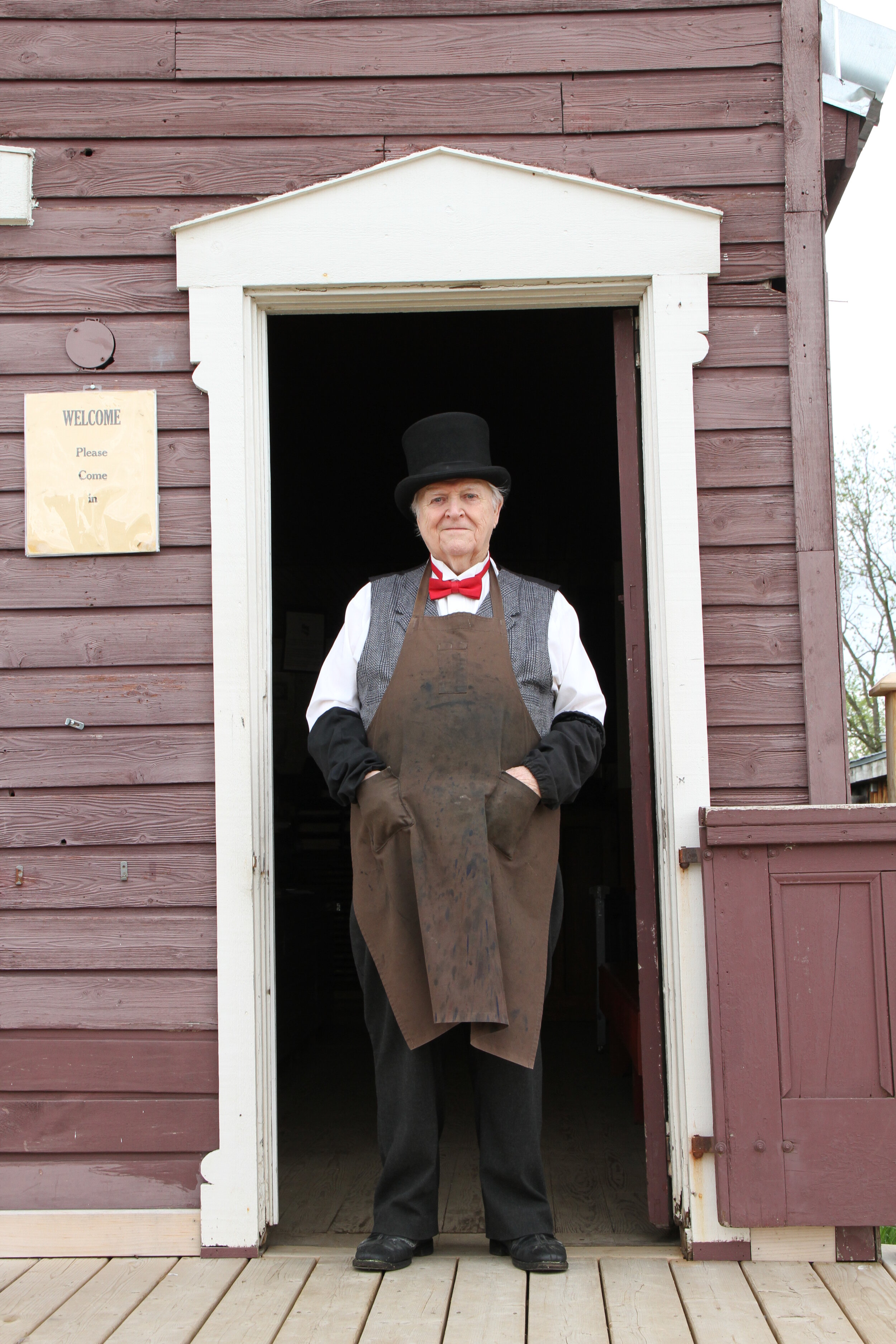Print Shop
Replica Building
Built 1967
Representative of an 1890s Print Shop
This replica shop was built and equipped by the London Free Press to celebrate the Canadian Centennial in 1967. Situated on the front lawn of the CFPL-LFP headquarters on York Street, it was opened for public tours on July 28, 1967. It was later enjoyed by visitors at the Western Fair, before being moved to the Village in September 1967.
The replica is a plausible re-creation of the original Canadian Free Press that had been located on Dundas Street, near Ridout. The exact appearance of the original building is unknown, as it fell victim to arson in 1849. This reimagining combines features and materials used in other early print shops.
During the 19th century, newspapers In Southwestern Ontario were often rural endeavours with a reading audience that never went beyond the local community. A source from 1838 states that these small publications were “the principle (sic)medium of knowledge and communication in Upper Canada, due to the scarcity of books.” By the end of the century the cost of printing technology had decreased, allowing for an increase in publications.
London’s first newspaper appeared in 1831, but did not last long. In 1849, William Sutherland launched The Canadian Free Press, but that same year a mob, unhappy with his support for the Reform Party, set his shop on fire. He continued printing from a new location, but after failing to turn his weekly paper into a daily, he sold it to 29-year-old Josiah Blackburn in 1852. Josiah renamed it the London Free Press and successfully transformed it into a daily paper that was family owned until 1997. The London Free Press is still published today.
Communication
In addition to the London Free Press, London has seen many important publications including the Farmer’s Advocate (1866-1965) and the Dawn of Tomorrow (1923-1971), an influential national Black newspaper started by James F. Jenkins to connect, celebrate, and advocate for the Black community.
At the turn of the century, improved lines of communication were connecting communities to national and international events and debates. The onset of electrification and telecommunication allowed news to spread quickly.
In 1922, Arthur Blackburn, Josiah’s son, was granted one of the first radio licenses in Canada and opened London’s first radio station, CJGC-AM.
Building restoration supported by The Walter J. Blackburn Foundation, and the Community Infrastructure Improvement Fund, Federal Economic Development Agency for Southern Ontario.














